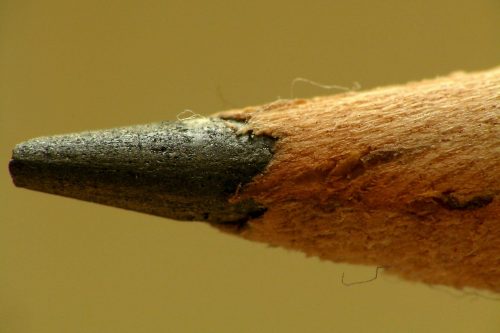You have most likely seen them before: surfaces such as coatings on medical devices that claim to have anti-bacterial properties, killing germs that land on them. Current methods for creating anti-bacterial surface involve the use of either transition metals, such as silver and copper, or organosilane (compounds with carbon and silicon atoms bonded together) coatings, which create a rough, sandpaper-like surface that shreds bacterial membranes. A compound with growing interest for use in anti-bacterial coatings is graphene oxide (GO)—a variant of the compound found in pencil lead. Previous studies have shown that grafting GO sheets to reactive organic membranes can induce anti-microbial activity on these surfaces.
However, the techniques used to make these surfaces germ-free do not work on all types of surfaces. For organic surfaces—those that are composed of organic molecules—scientists rely on reactions between anti-microbial molecules, such as graphene oxide (GO), and reactive groups on organic surfaces. The more unstable a compound is, the more likely it is to react with another molecule to form a more stable product. Currently, scientists have developed ways to take advantage of unstable regions on organic surfaces by attaching GO to the surface, which provides them with anti-bacterial properties. This technique, however, relies on the presence of active, unstable groups on the surface molecules. If scientists cannot react GO with the surface, they cannot give the surface anti-bacterial properties.
In a paper published in the American Chemical Society, a multi-institutional team led by Professor Menachem Elimelech demonstrated a technique that could attach GO to inert organic surfaces—those without any active groups. The method relies on benzophenone, a generally stable organic molecule that becomes highly reactive when exposed to UV radiation. First, researchers attached benzophenone molecules to GO sheets. After removing GO sheets that did not have benzophenone molecules attached, researchers then prepared three types of non-reactive surfaces (polysulfone, hydrophilic PVDF, and hydrophobic PVDF) and exposed only one side to the benzophenone-attached GO sheets. Once the GO sheets were adsorbed to the non-reactive surfaces, the team exposed this reaction mixture to UV radiation, causing the benzophenone groups on the GO sheets to become extremely reactive and react with the non-reactive surface, attaching GO. After filtering out surfaces that did not have GO attached, Elimelach and his team tested their products.
The group noted three key properties of their product in their article. First, they found that GO sheets were permanently bound to the non-reactive surfaces. This meant that their method could produce lasting results that would not be lost from another reaction. The researchers also found that the surface retained most of its physical properties, such as membrane permeability and hydrophilicity (attraction to water). This meant that useful properties of surfaces, such as their ability or inability to permeate water, would not be compromised with their method. Most importantly, the researchers confirmed that their method gave anti-bacterial properties to inert surfaces, decreasing bacterial survival by sixty-five and seventy-five percent for polysulfone and eighty and ninety percent for PVDF.
The researchers are optimistic about the implications of their findings; the new method could be used to add anti-microbial properties to any set of surfaces, which previously could not be transformed.

